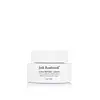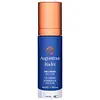What's inside
What's inside
 Key Ingredients
Key Ingredients

 Benefits
Benefits

 Concerns
Concerns

 Ingredients Side-by-side
Ingredients Side-by-side

Water
Skin ConditioningAloe Barbadensis Leaf Juice
Skin ConditioningGlycerin
HumectantOlea Europaea Fruit Oil
MaskingNiacinamide
SmoothingPisum Sativum Extract
Skin ConditioningChenopodium Quinoa Seed Extract
Skin ConditioningHydrogenated Lecithin
EmulsifyingC12-16 Alcohols
EmollientPalmitic Acid
EmollientPolyglyceryl-6 Polyricinoleate
EmulsifyingPolyglyceryl-2 Isostearate
EmulsifyingDisteardimonium Hectorite
StabilisingHexapeptide-11
Skin ConditioningPalmitoyl Tripeptide-1
Skin ConditioningPalmitoyl Tetrapeptide-7
Skin ConditioningSaccharomyces Ferment Filtrate
Humectant1,2-Hexanediol
Skin ConditioningHydroxyacetophenone
AntioxidantSclerocarya Birrea Seed Oil
HumectantCalophyllum Tacamahaca Seed Extract
HumectantAdansonia Digitata Oil
EmollientSesamum Indicum Seed Oil
EmollientBeta Vulgaris Root Powder
AntioxidantCitrus Grandis Peel Water
HumectantCeramide NP
Skin ConditioningCalcium Chloride
AstringentTocopherol
AntioxidantLeuconostoc/Radish Root Ferment Filtrate
AntimicrobialMica
Cosmetic ColorantTin Oxide
AbrasiveTitanium Dioxide
Cosmetic ColorantCaesalpinia Sappan Bark Extract
Skin ConditioningPhenethyl Alcohol
MaskingEthylhexylglycerin
Skin ConditioningWater, Aloe Barbadensis Leaf Juice, Glycerin, Olea Europaea Fruit Oil, Niacinamide, Pisum Sativum Extract, Chenopodium Quinoa Seed Extract, Hydrogenated Lecithin, C12-16 Alcohols, Palmitic Acid, Polyglyceryl-6 Polyricinoleate, Polyglyceryl-2 Isostearate, Disteardimonium Hectorite, Hexapeptide-11, Palmitoyl Tripeptide-1, Palmitoyl Tetrapeptide-7, Saccharomyces Ferment Filtrate, 1,2-Hexanediol, Hydroxyacetophenone, Sclerocarya Birrea Seed Oil, Calophyllum Tacamahaca Seed Extract, Adansonia Digitata Oil, Sesamum Indicum Seed Oil, Beta Vulgaris Root Powder, Citrus Grandis Peel Water, Ceramide NP, Calcium Chloride, Tocopherol, Leuconostoc/Radish Root Ferment Filtrate, Mica, Tin Oxide, Titanium Dioxide, Caesalpinia Sappan Bark Extract, Phenethyl Alcohol, Ethylhexylglycerin
Water
Skin ConditioningCaprylic/Capric Triglyceride
MaskingPentylene Glycol
Skin ConditioningPropylene Glycol
HumectantHydrogenated Phosphatidylcholine
EmulsifyingGlycerin
HumectantSorbitol
HumectantTocopheryl Acetate
AntioxidantButyrospermum Parkii Butter
Skin ConditioningXanthan Gum
EmulsifyingButylene Glycol
HumectantPanthenol
Skin ConditioningSodium Carbomer
Emulsion StabilisingAloe Barbadensis Leaf Juice
Skin ConditioningAlcohol
AntimicrobialHydrolyzed Rice Protein
Skin ConditioningSqualane
EmollientHelianthus Annuus Seed Oil
EmollientPhenoxyethanol
PreservativeSodium Hydroxide
BufferingCarbomer
Emulsion StabilisingLecithin
EmollientCholesterol
EmollientHydrogenated Lecithin
EmulsifyingAscorbyl Palmitate
AntioxidantCeramide NP
Skin ConditioningGlycine Soja Protein
EmulsifyingSuperoxide Dismutase
AntioxidantCitric Acid
BufferingDextran
Palmitoyl Tripeptide-8
Skin ConditioningAlanyl Glutamine
HumectantArginine
MaskingCeramide Ng
Skin ConditioningGlycine
BufferingLysine
Skin ConditioningOleic Acid
EmollientPalmitic Acid
EmollientPhenylalanine
MaskingProline
Skin ConditioningScenedesmus Rubescens Extract
Skin ConditioningAscorbic Acid
AntioxidantRetinyl Palmitate
Skin ConditioningSodium Benzoate
MaskingPotassium Sorbate
PreservativeEthylhexylglycerin
Skin ConditioningSodium Dextran Sulfate
Gel FormingBetula Alba Oil
MaskingDisodium EDTA
Oligopeptide-177
Sodium Ascorbate
AntioxidantTocopherol
AntioxidantWater, Caprylic/Capric Triglyceride, Pentylene Glycol, Propylene Glycol, Hydrogenated Phosphatidylcholine, Glycerin, Sorbitol, Tocopheryl Acetate, Butyrospermum Parkii Butter, Xanthan Gum, Butylene Glycol, Panthenol, Sodium Carbomer, Aloe Barbadensis Leaf Juice, Alcohol, Hydrolyzed Rice Protein, Squalane, Helianthus Annuus Seed Oil, Phenoxyethanol, Sodium Hydroxide, Carbomer, Lecithin, Cholesterol, Hydrogenated Lecithin, Ascorbyl Palmitate, Ceramide NP, Glycine Soja Protein, Superoxide Dismutase, Citric Acid, Dextran, Palmitoyl Tripeptide-8, Alanyl Glutamine, Arginine, Ceramide Ng, Glycine, Lysine, Oleic Acid, Palmitic Acid, Phenylalanine, Proline, Scenedesmus Rubescens Extract, Ascorbic Acid, Retinyl Palmitate, Sodium Benzoate, Potassium Sorbate, Ethylhexylglycerin, Sodium Dextran Sulfate, Betula Alba Oil, Disodium EDTA, Oligopeptide-177, Sodium Ascorbate, Tocopherol
Alternatives
Ingredients Explained
These ingredients are found in both products.
Ingredients higher up in an ingredient list are typically present in a larger amount.
Aloe Barbadensis Leaf Juice comes from leaves of the aloe plant. Aloe Barbadensis Leaf Juice is best known for helping to soothe sunburns. It is also anti-inflammatory, moisturizing, antiseptic, and can help heal wounds.
Aloe is packed with good stuff including Vitamins A, C, and E. These vitamins are antioxidants, which help fight free-radicals and the damage they may cause. Free-radicals are molecules that may damage your skin cells, such as pollution.
Aloe Barbadensis Leaf Juice also contains sugars. These sugars come in the form of monosaccharides and polysaccharides, folic acid, and choline. These sugars are able to help bind moisture to skin.
It also contains minerals such as calcium, 12 anthraquinones, fatty acids, amino acids, and Vitamin B12.
Learn more about Aloe Barbadensis Leaf JuiceCeramide NP is a type of ceramide and formally known as ceramide 3.
Ceramides are intercellular lipids naturally found in our skin that bonds dead skin cells together to create a barrier. They are known for their ability to hold water and thus are a great ingredient for dry skin.
Ceramides are an important building block for our skin barrier. A stronger barrier helps the skin look more firm and hydrated. By bolstering the skin ceramides act as a barrier against irritating ingredients. This can help with inflammation as well.
If you would like to eat ceramides, sweet potatoes contain a small amount.
Read more about other common types of ceramides here:
Ceramide AP
Ceramide EOP
Ethylhexylglycerin (we can't pronounce this either) is commonly used as a preservative and skin softener. It is derived from glyceryl.
You might see Ethylhexylglycerin often paired with other preservatives such as phenoxyethanol. Ethylhexylglycerin has been found to increase the effectiveness of these other preservatives.
Glycerin is already naturally found in your skin. It helps moisturize and protect your skin.
A study from 2016 found glycerin to be more effective as a humectant than AHAs and hyaluronic acid.
As a humectant, it helps the skin stay hydrated by pulling moisture to your skin. The low molecular weight of glycerin allows it to pull moisture into the deeper layers of your skin.
Hydrated skin improves your skin barrier; Your skin barrier helps protect against irritants and bacteria.
Glycerin has also been found to have antimicrobial and antiviral properties. Due to these properties, glycerin is often used in wound and burn treatments.
In cosmetics, glycerin is usually derived from plants such as soybean or palm. However, it can also be sourced from animals, such as tallow or animal fat.
This ingredient is organic, colorless, odorless, and non-toxic.
Glycerin is the name for this ingredient in American English. British English uses Glycerol/Glycerine.
Learn more about GlycerinHydrogenated Lecithin is created from the hydrogenation of lecithin (a group of phospholipids). Hydrogenation is a chemical reaction between hydrogen and another element.
This ingredient is an emollient and emulsifier. As an emollient, it helps soften skin by trapping moisture within. As an emulsifier, it prevents oil and water ingredients from separating.
Palmitic Acid is a fatty acid naturally found in our skin and in many plant and animal sources. In cosmetics, it is usually derived from palm oil. It serves many purposes in skincare, acting as a cleanser, emollient, and emulsifier.
As an emollient, palmitic acid helps soften and smooth the skin by preventing water loss. In cleansers, it helps remove oil and dirt while creating foam.
Its emulsifying properties help stabilize products by keeping water and oil-based ingredients from separating.
This may not be suitable for fungal acne-prone skin, as fatty acids like this can sometimes trigger breakouts in sensitive individuals.
Learn more about Palmitic AcidTocopherol (also known as Vitamin E) is a common antioxidant used to help protect the skin from free-radicals and strengthen the skin barrier. It's also fat soluble - this means our skin is great at absorbing it.
Vitamin E also helps keep your natural skin lipids healthy. Your lipid skin barrier naturally consists of lipids, ceramides, and fatty acids. Vitamin E offers extra protection for your skin’s lipid barrier, keeping your skin healthy and nourished.
Another benefit is a bit of UV protection. Vitamin E helps reduce the damage caused by UVB rays. (It should not replace your sunscreen). Combining it with Vitamin C can decrease sunburned cells and hyperpigmentation after UV exposure.
You might have noticed Vitamin E + C often paired together. This is because it is great at stabilizing Vitamin C. Using the two together helps increase the effectiveness of both ingredients.
There are often claims that Vitamin E can reduce/prevent scarring, but these claims haven't been confirmed by scientific research.
Learn more about TocopherolWater. It's the most common cosmetic ingredient of all. You'll usually see it at the top of ingredient lists, meaning that it makes up the largest part of the product.
So why is it so popular? Water most often acts as a solvent - this means that it helps dissolve other ingredients into the formulation.
You'll also recognize water as that liquid we all need to stay alive. If you see this, drink a glass of water. Stay hydrated!
Learn more about Water